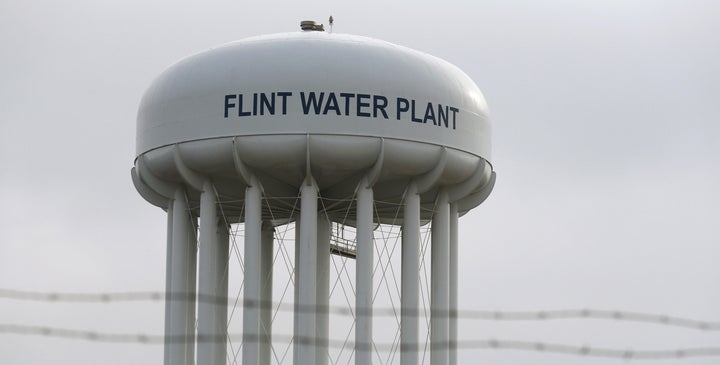
WASHINGTON ― The water in Flint, Michigan, could have caused skin problems when the city used the Flint River as its water source, federal investigators concluded after an extensive study.
Many residents have continued to complain of ailments. But the researchers say they don’t know how Flint’s water could still be causing rashes since the city switched back to more stable Lake Huron water in October 2015.
“Fortunately, water samples from the city’s current water did not show metals and minerals at levels that would cause or make rashes worse,” Dr. Nicole Lurie, of the Department of Health and Human Services, said in a statement.
“Residents who are still suffering from rashes or hair loss or have other health concerns should visit a doctor or a community health center for care and possible referral to a dermatologist,” Lurie said.
People in Flint noticed problems with the water immediately after the city started pumping from the Flint River in a state-approved plan to save money. The river water was discolored and the city struggled to control problems with bacteria as well as chemical contaminants used for fighting the bacteria.
It turned out the biggest problem was state regulators failed to ensure the water was treated to prevent it from corroding the city’s lead pipes. Last fall, doctors reported Flint kids had higher levels of lead in their blood. Lead exposure can cause permanent brain damage, and the revelation prompted the state of Michigan to reconnect Flint to the Detroit water system, which uses Lake Huron as its source.
The regional director of the federal Environmental Protection Agency resigned in the wake of revelations that the government knew of the problem earlier last year, as did several state officials. Nine state and local bureaucrats have been charged with crimes.
Lead levels in Flint’s water have since declined, but the government still advises residents to drink only filtered or bottled water. Despite rash complaints, officials have maintained that the water is safe for bathing.
This year, actor Mark Ruffalo, one of many celebrities who rallied to Flint’s cause, led a high-profile (and scientifically dubious) campaign challenging the government’s bathing assurances.
For its rash research the government interviewed 390 Flint residents who’d complained of skin problems, and took water samples from 170 homes. Nearly half said their rashes started after October 2015, when the government says the water’s chemistry has been stabler and “does not contain metals and minerals at levels known to be associated with skin problems.”
“We concur that the water quality testing performed on current water was quite comprehensive and did not find any abnormality that could cause or worsen rashes or hair loss,” said Dr. Walter Barkey, a Flint-area dermatologist who worked with federal researchers.
“We also concur that the marked fluctuations in pH, hardness and chlorine while the Flint River was the water source could really explain the most common type of rash found in the study which was eczema,” Barkey said.
Flint residents: Does your water seem like it’s getting better? Tell us about it ― email arthur@huffingtonpost.com. Please include your phone number if you’re willing to be interviewed.
